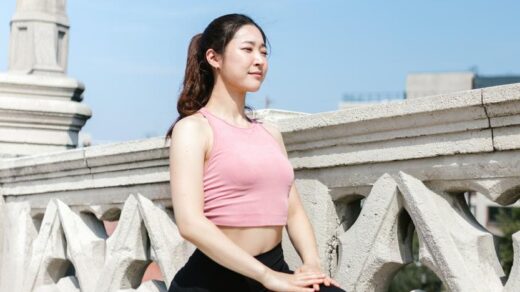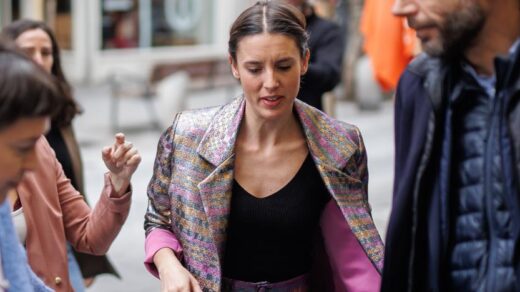In a world full of ever-changing trends and fleeting fads, there is something truly captivating about the enduring charm of parquetry flooring. Crafted with meticulous precision and an unwavering commitment to artistry, this timeless technique has graced some of the most exquisite spaces throughout history. From regal palaces to stately homes, parquetry flooring has long been revered for its ability to elevate any interior with its unparalleled elegance. Join us on a journey through the rich history and intricacies of parquetry flooring as we explore why it continues to be a symbol of sophistication and refined taste in the modern era.
The allure of parquetry flooring
Parquetry flooring holds a certain allure that is unmatched by other types of flooring. Its intricate patterns and geometric designs create a sense of sophistication and elegance that instantly transforms any space into a work of art. The meticulous craftsmanship involved in creating parquetry flooring only adds to its appeal, as each piece is carefully cut and laid to perfection.
One of the unique aspects of parquetry flooring is its versatility. Unlike traditional hardwood floors, parquet can be customized to suit any design style or aesthetic preference. Whether you prefer a classic herringbone pattern or a more contemporary chevron design, parquet allows you to express your creativity and personalize your space. This adaptability also extends to the choice of wood species used, with options ranging from rich oak to exotic teak, allowing you to further enhance the beauty and warmth of your interior.
Apart from its aesthetic charm, parquetry flooring offers practical benefits as well. Due to its intricate nature with smaller individual pieces tightly fitted together, it provides excellent durability and stability. This makes it ideal for high-traffic areas such as hallways or living rooms where wear and tear are common concerns. Furthermore, parquet’s natural insulation properties help keep spaces warm in colder months while remaining cool during summer days – providing both comfort and energy efficiency.
In conclusion, there is no denying the timeless beauty and allure that comes with parquetry flooring.
History: The origins of parquetry flooring
The origins of parquetry flooring can be traced back to the 17th century in France. It was during this time that the technique of creating intricate wood patterns for floors became popular among the French aristocracy. Parquetry, which is derived from the French word parquet, meaning small compartment or pattern, was initially used to decorate palace floors and ballrooms.
However, it wasn’t until the 18th century that parquetry flooring truly began to spread across Europe and gain recognition as a sophisticated and luxurious choice for interiors. The rise in popularity can be attributed to King Louis XIV of France, also known as the Sun King, who took a keen interest in extravagant interior design. He commissioned talented craftsmen to create intricate parquetry designs throughout his palace at Versailles.
Over time, parquetry flooring evolved from being solely made with natural wood species such as oak and walnut, to incorporating various types of exotic woods like mahogany and ebony. This allowed for endless possibilities in terms of design and color variations. Today, modern techniques have made it possible to create parquetry flooring using veneers or laminate materials that mimic traditional solid wood options.
As we appreciate the timeless beauty of parquetry flooring today, let us remember its rich history rooted in opulent European palaces and royal indulgence. From humble beginnings came an elegant art form that continues to grace homes around the world with its intricate patterns and undeniable charm.
Design: Intricate patterns and endless possibilities
In the world of design, there are few things as mesmerizing as intricate patterns. From the delicate details of a lace pattern to the bold lines of a geometric design, these intricacies add depth and character to any space. When it comes to flooring, parquetry is the epitome of elegance and sophistication.
Parquetry flooring is an artform that has been around for centuries, dating back to its origins in 17th century France. The technique involves arranging small pieces of wood in intricate patterns, creating a stunning visual effect. One of the most fascinating aspects of parquetry is the endless possibilities it offers. With countless combinations of wood types and patterns, each floor becomes a unique masterpiece.
What makes parquetry truly captivating is not just its beauty, but also its ability to transform a space. Whether used in a grand ballroom or a cozy living room, parquet flooring adds an element of refinement that other materials simply cannot match. Its intricate patterns draw the eye and create a sense of movement and dynamism within the room.
When it comes to design options, parquet flooring leaves no stone unturned. From classic herringbone patterns to more modern chevron designs or even custom-created motifs, there is something for every aesthetic taste. The versatility of parquetry allows for seamless integration into any interior style – from traditional to contemporary – elevating the overall ambiance with its timeless charm.
Materials: Types of wood used in parquetry flooring
When it comes to parquetry flooring, the materials used play a crucial role in achieving its timeless beauty. One of the most popular choices for parquetry flooring is oak. Oak offers a natural warmth and durability that is unmatched by other woods. Its distinctive grain patterns create an elegant and unique look that adds character to any space. Additionally, oak has excellent wear resistance, making it ideal for high traffic areas.
Another wood commonly used in parquetry flooring is walnut. Known for its rich, dark brown color and fine grain, walnut adds a touch of luxury to any room. The deep tones of walnut complement both traditional and contemporary interiors, adding a sense of sophistication and opulence. Apart from its stunning appearance, walnut also has great dimensional stability and moisture resistance, making it suitable for installation in kitchens or bathrooms.
For those looking for something more exotic, mahogany is a fantastic choice for parquetry flooring. With its reddish-brown hue and beautiful swirling grain patterns, mahogany exudes elegance and class. This richly colored wood instantly elevates the aesthetic appeal of any space while providing exceptional strength and hardness. Mahogany’s ability to resist warping or shrinking makes it an excellent option for those seeking long-lasting beauty in their parquetry flooring.
In conclusion, the choice of wood used in parquetry flooring significantly impacts the overall look and durability of this timeless design option.
Installation: Techniques for a flawless finish
When it comes to installing parquetry flooring, attention to detail is crucial for achieving a flawless finish. One technique that can make a significant difference is using the dry-lay method before permanently affixing the pieces. This involves laying out the parquet tiles without any adhesive or nails, allowing you to make adjustments and ensure that the pattern flows seamlessly. Taking the time to do this preliminary step will not only prevent mistakes but also give you a clear visualization of how the final result will look.
Another important aspect of installation is ensuring that all subfloor imperfections are addressed before starting. A perfectly level and smooth surface is essential for avoiding gaps or misalignments in your parquetry flooring. Using a self-leveling compound can help smooth out any unevenness, while sanding down high areas will create an even foundation for your wood tiles. Additionally, be sure to remove any debris and dust thoroughly so they won’t interfere with the adhesion process.
Lastly, choosing high-quality adhesives specifically designed for parquet installations is vital. Opt for specialized products with strong bonding properties that are resistant to moisture and temperature fluctuations. Applying the adhesive evenly across both the subfloor and back of each tile should be done with precision – too much can create an excess mess while too little may compromise stability.
By employing these techniques during installation, you’ll pave the way towards achieving a truly flawless finish on your parquetry flooring project.
Maintenance: Caring for your parquetry flooring
Parquetry flooring is a luxurious and timeless choice for any home, adding both elegance and longevity to your living space. However, like any investment, it requires proper care to maintain its original beauty. Regular maintenance of your parquetry flooring is crucial in order to prevent scratches, cracks, or wear and tear that can dull its appearance over time.
One of the best ways to care for your parquetry flooring is by using mats or rugs in high traffic areas like entryways or hallways. These protective coverings will help catch debris and prevent it from scratching the surface of your floor. Additionally, regularly sweeping or vacuuming your parquetry flooring will remove dust particles that can act as an abrasive when walked on.
In addition to preventive measures, periodic professional cleaning is also recommended. Professional cleaners have the knowledge and expertise to safely clean and maintain parquet floors without causing damage. They use specialized equipment and products designed specifically for this type of flooring. By investing in professional cleaning services, you can ensure that your parquetry floor stays stunning for years to come.
Ultimately, caring for your parquetry flooring goes beyond just regular maintenance – it’s about embracing its inherent elegance and enjoying the timeless beauty it brings to your home. When properly cared for, this exquisite flooring option will continue to impress guests and add a touch of sophistication to any room. So take pride in owning such a classic piece of design mastery – master elegance with every step on your well-maintained parquet floor!




